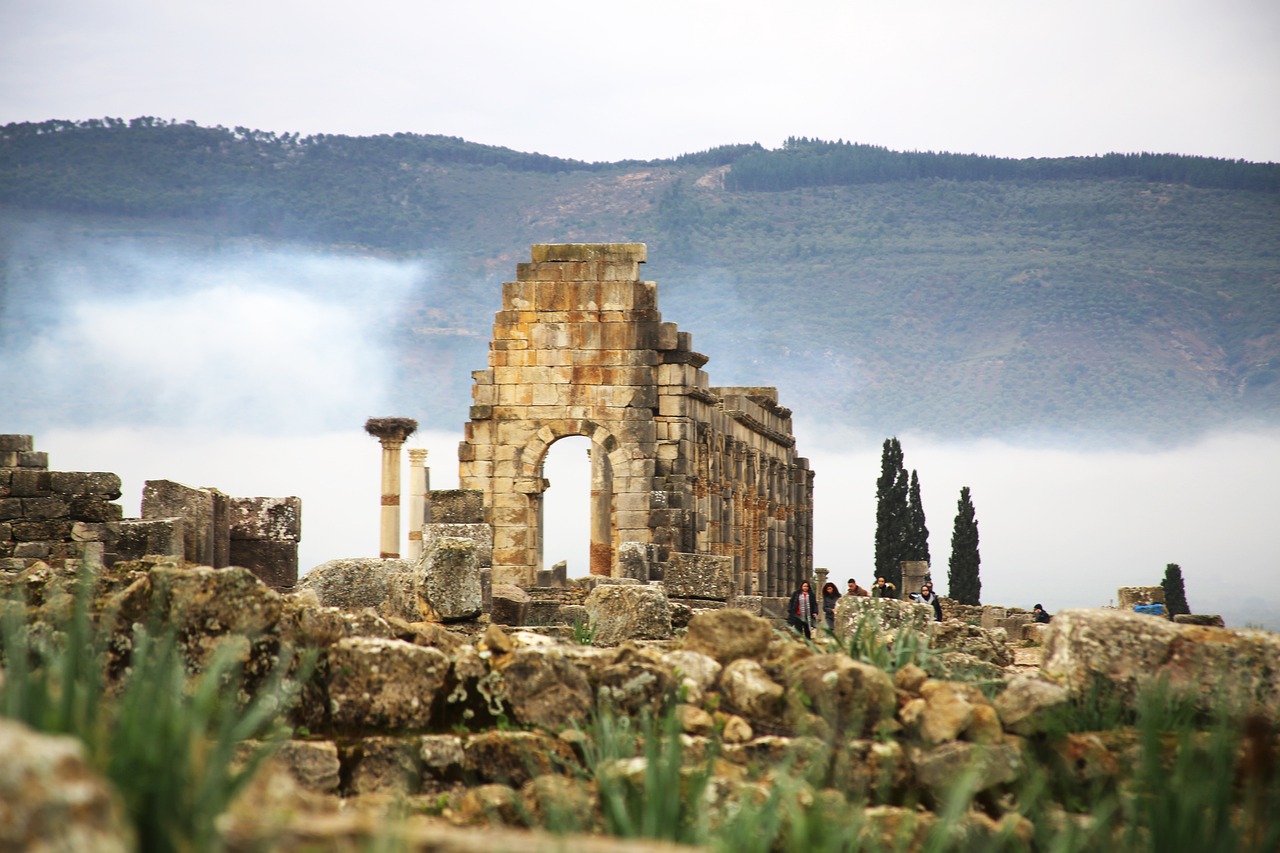Things to do in Meknes
Things to do in Meknes: Even though it is now regarded as a quaint provincial town, Meknes, Morocco, still has some of its previous splendor left. This town is sometimes referred to as the “Versailles of Morocco” or “Little Paris,” despite the fact that it is a haven of tranquility.
How far away is Meknes?
Meknes, located 150 kilometers from Rabat and 60 kilometers from Fez, is frequently overlooked by tourists as there aren’t many Things to do in Meknes. Those who decide to travel are only there for one or two days. This is a serious error given all that Meknes has to offer. Its attractiveness and atmosphere will charm anyone who wants to stay a while. On walking tours, you can investigate and learn about the history of the city and of Morocco as a whole.
historical images of the city
Meknes, in Morocco, has a long and interesting history. One of Morocco’s four imperial cities, it is. The Meknassa Berber tribe moved from the Middle Atlas highlands to the Sais plateau in the early 10th century (Sas).
Due to the favorable geography and easy availability to water, this area was ideal for development. It is significant to remember that the first fortified village in this region was established in the seventh century.
King Almohad and Merynid
The Almohad and Merynid kings, who built a magnificent medina and the earliest defensive walls in Morocco, contributed to the city’s expansion during this time (12th–15th centuries).
The city underwent significant development after Mulay Ismail designated Meknes as the nation’s capital in 1672, a designation it kept until 1727. The most brutal tyrant to rule Morocco ever did not squander money on expanding and adorning his capital.
According to tradition
According to tradition, Ismail would violently slaughter the workers if he was dissatisfied with their work and have their blood mixed with cement for the subsequent building. Additionally, some of the building supplies were stolen from Marrakech and Volubilis.
One of this leader’s high ambitions is a massive palace structure that hasn’t been built. Additionally, he commanded the building of additional smaller palaces, libraries, hospitals, mosques, and hospitals. This website employs cookies. By using it further, you accept the usage of cookies. Click here for additional information. I finally understand.
Meknes harmed.
Meknes suffered significant earthquake damage, much like Agadir. It happened in 1755, unfortunately stopping Meknes’ growth and robbing it of its political influence.
Sadly, the city’s prognosis was still grim. It was chosen as the major headquarters of the French occupying force at the beginning of the 20th century, which led to it becoming the scene of innumerable horrible battles between Moroccans and French.
Meknes in Morocco only gained support from the government after Morocco won its independence in 1956. The city was undergoing extensive renovation and expansion at the time.
Meknes Medina, a Moroccan city
The Medina is one of the pride and pleasure Things to do and see in Meknes and was designated a UNESCO World Heritage Site in 1996. A unique combination of architectural styles has resulted from its violent past. Stunning elements of French design are combined with Arabic decorative traditions.
The fascinating network of tucked-away squares, little lanes, and meandering alleyways might keep you occupied all day. The thought of uncovering their mysteries captivates travelers.
Tourist attractions in Meknes
- The heart of the old city is located west of the mellah, or Jewish settlement. It may be reached through the Mansura Gate (Bab el-Mansour), which is a wonderful building in and of itself. The name of its maker is engraved on the gate. The building was finished in 1732, five years after Ismail, the person who commissioned it, passed dead. The magnificent mosaic embellishments give the impression that the massive gate is a fragile, openwork construction.
- Vintage Volubilis columns are also used to decorate the gate.
- We will halt in Lalla Aouda Square after passing through the gate, which used to be a meshwar (a place for parades and inspections of the Sultan’s army) in ancient times. The Sultan’s Black Guard was composed of 16,000 black slaves at the height of the capital. The square was previously a part of the building that housed the Dar el-Kebir royal palace. The majority of the 24 different framed portions, each with gardens and mosques, were destroyed by Mulay Ismail’s son. Originally, it was divided into 24 separate pieces.
- The Tomb of Ismail Currently, the Ismail tomb is located behind the representative pavilion of Kubbat el-Khiyatin.
- Even though the ruler has a bad reputation, tourists still travel from all across the country to see this mausoleum. Along with visiting the beautiful setting and wanting to pay respect to the past king or queen, they most likely come for the barakah, or blessing. At the end of the harvest, this location hosts annual mussems (usually on the last Thursday of August). Fairs, fancy dress competitions, dancing, and singing are all part of the celebration. The tomb is off-limits to Muslims, and visitors are not permitted in the temple.
- The Grand Mosque is located right in the middle of the Medina. Sadly, the minaret with the green mosaic covering collapsed on February 19, 2010.
- The devastating consequences of the excessive rains were most likely what brought about the catastrophe. The minaret and a portion of the roof falling caused 41 deaths and more than 80 injuries. By using it in the future, you consent to its use of cookies. Click here to learn more. Now that I know how Sultan structures operate.
- The vast granaries with an air conditioning system that was outstanding for its day, the enormous granaries with stables for 12,000 horses, and the royal gardens, which are still off-limits to the public, all add to the splendor of the Sultan’s buildings (unfortunately, the stables are now in ruins).
- The most valuable asset in the medina is the Medresa Bu Inania, built by Abou Hassan Marini (1331-1351). This Koranic school is regarded as a gem of Arabic architecture. Its walls are made of opaque lead-tin-coated pottery called majolica, which boasts wonderfully vivid hues. The stucco, arabesques, and sculptures made of olive wood are notable elements. Mulay Idris Madrasa’s amazing cylinder-shaped minaret makes a trip there highly recommended.
- The Andalusian garden-museum, where you can relax after a long travel, and the museum Dar Jama, which houses a collection of Berber kilims and ceramics, are additional places of interest.
- Every year, the day before Mohammed’s birthday, Sidi ben Aissy marabout hosts one of Morocco’s biggest mussems. Unfortunately, visitors who are not Muslims cannot enter the tomb.
- On the other bank of the Bu Fekran River, the ville nouvelle, or new town, was constructed throughout the French rule. Elegant villas and lavish palaces may be seen in the neighborhood, which is well-maintained. Banks, upscale stores, restaurants, and cafes emerge within the dense forest. The aroma of the coffee known as qahwa bil-halib, which is prepared with cardamom and cinnamon and served in huge cups, draws visitors from all around.
- Exotic mango sorbet or almond pastries go well with coffee.
- In addition to its wine and olives, Meknes in Morocco is well-known for its antiquities. Due to the nearby hills, these grapes may grow successfully. The sector was undoubtedly founded by the French, but Moroccan producers have since found success. The ville nouvelle is the greatest location to purchase regional wine.
- Excellent red wines include Comtesse de Lacourtabalise, Beni M’Tir Larroque Cabernet Sauvignon, and Les Coteaux de l’Atlas. Excellent white wines include Beauvallon Chardonnay and Medaillon Cabernet Sauvignon.
- Despite being expensive, these wines are worthwhile to taste. Even for this reason, it is unlikely for there to be any local wineries because Morocco is an Islamic country.
- Suki or fair? Of course, Meknes, like other Moroccan cities, has a large number of souks. The palace of Dar Jamai has a carpet market, Bab Berrima’s western gate has a jewelry market, and farther north is a spice and nut market. These are but a few examples of the goods offered by surrounding sellers.

